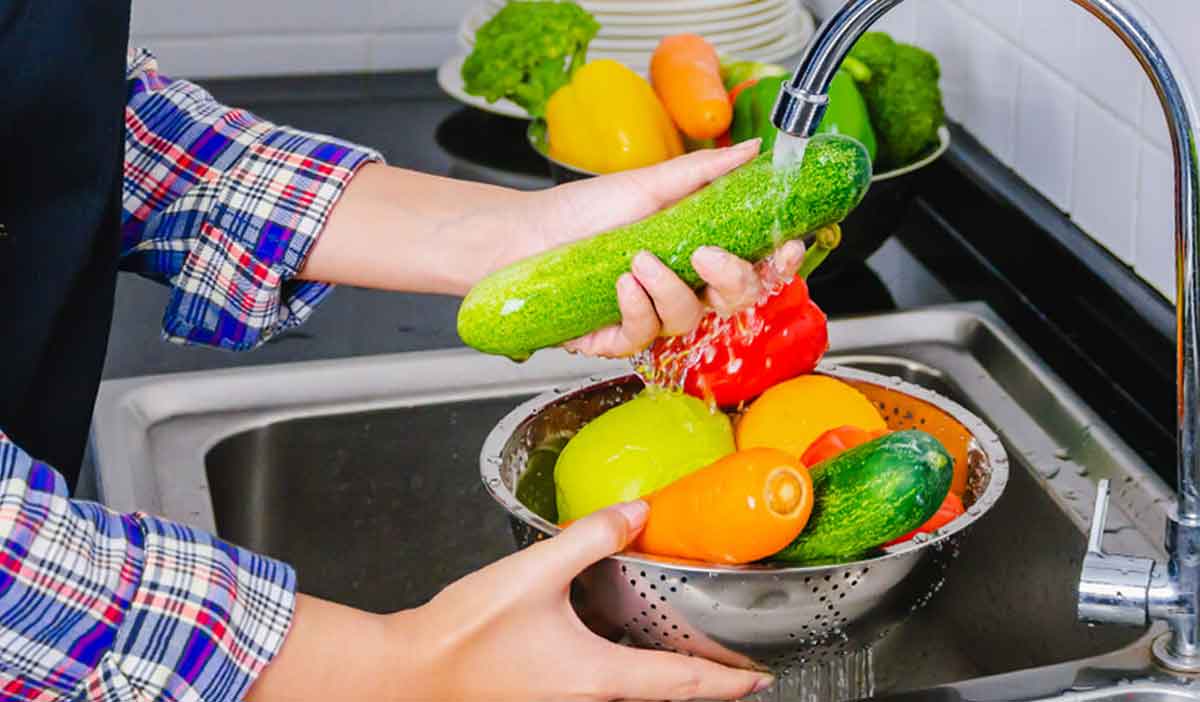“I will apply dietetic and lifestyle measures to help the sick to my best ability and judgment; I will protect them from harm and injustice.”
This wordy oath by Hippocrates, the famous Greek founder of western medicine, is what some scholars say is the original version of the more spirited, modern translation of maxim many of us know well:
“Let food be thy medicine, and let medicine be thy food.”
However you want to quote him, Hippocrates’ dietary and lifestyle recommendations are as relevant to people today as they were to folks living in ancient Greece.
When it comes to using what you eat to improve your health, nothing comes close to the benefits that you can get from consuming healthy foods. In real-life, eating right can be easier said than done. Keep reading for tips on easy ways to think like a dietician and add more fruits and veggies to your meals.

Tip #1: Try veggies for breakfast
You don’t have to wait until lunch or dinner to start eating veggies. Although it’s less common here in the United States, many people all over the world jump start their days with a delicious breakfast loaded with vegetables.
Whether that means slipping some fresh spinach or frozen broccoli into your banana smoothie or popping some peppers, onions, and tomatoes into the frying pan with your scrambled eggs, starting your day with nutrient-rich veggies is a great way to fill up without fat and calories.
Tip #2: Think of fruit as your new fast food
Getting a piece of fruit ready to eat takes less time than waiting in the line of your favorite fast food joint’s busy drive-through. It’s also better for your heart and makes for a cheaper snack option, too!
Discover which lifestyle changes can lower your risks from high cholesterol
So don’t wait until you’re feeling “hangry” or snack-y to stock up. If you always keep hearty fruits—like bananas and apples—on hand, it will be easier to make a healthy food decision when your stomach starts to rumble. (Plus, the fiber from fruit will help you feel full longer!)
Tip #3: Begin your meal with soup or a salad
When you’re eating out or cooking at home, make it a point to try and start every lunch and dinner with side salad or a veggies-filled soup. This “trick” is a great way to curb hunger and prevent overeating on richer, more calorie dense foods.
Tip #4: Start a weekend food prep habit
Eat the rainbow! And, shop it too. Fill your fridge and freezer with a wide variety of fruits and veggies, but before you put them away make sure to wash and prep them, too, so that they’re easier to eat when you’re ready. You’ll thank yourself later.
Tip #5: Be patient as your body adjusts
Making the switch from Captain Crunch, corndogs, and cookies to healthier food choices—like kiwi, kale, and cherries—takes time as your taste buds and cravings catch up with to your new diet. But, if you stick with it, your food preferences will change.
If you think you don’t like any fruits or veggies, keep trying different options until you find things you like and look forward to eating. Just because the latest food fad is kale-this-and-kale-that doesn’t mean you have to hop on the cruciferous veggies bandwagon to get the benefits of healthy eating, especially if you don’t like its taste.
Learn how to follow a heart healthy diet
The healthiest vegetables and fruits for your diet are the ones you’ll actually eat. Especially at the beginning of your transition, ensure your new habit sticks by focusing on the fruits and veggies that taste good to you, whether that’s cucumbers and carrots or zucchini and pears. Later on you can always work to add more options to your diet.
If you start getting bored with your old favorites and are ready to add greater variety, keep in mind that changing taste buds and breaking bad eating habits doesn’t happen overnight so if you don’t like something right away, don’t give up. Try it again.
Plus, if you’ve only consumed something one way, try preparing it using other methods. Who knows—maybe you’ll find out you hate to nibble on raw cauliflower but love the taste and texture once it’s been riced and steamed?
How your body changes when you eat more fruits and veggies
Be prepared for changes to how your body digests high-fiber foods.
Most people who aren’t used to eating a lot of fibrous foods on a regular basis usually cannot go straight to eating a pound of steamed broccoli in one sitting without experiencing some digestive discomfort, bloating, gas, and sometimes even belly cramps and pain.
Though the adjustment won’t happen overnight, your gut will catch up and your body will thank you once you transition to this life-changing way of eating.
Struggling to make a healthy eating switch on your own?
You don’t have to go it alone. Whether you’re trying to eat more fruits and veggies as part of a plan to lose weight or regain your health, the nutrition experts at Logansport Memorial Hospital can help you clean up your diet and create an eating plan you can stick with.
If losing weight and improving your health is your goal, our HMR program might be a good fit for you. Ready to learn more? Here are some ways to get started:
- Read up on the basics by visiting our website.
- Attend a free informational session. Find out when the next event is happening by calling (574)725-3599.
- Schedule a time to talk with our health care provider and medical supervisor Stacie Stutzman, NP.




